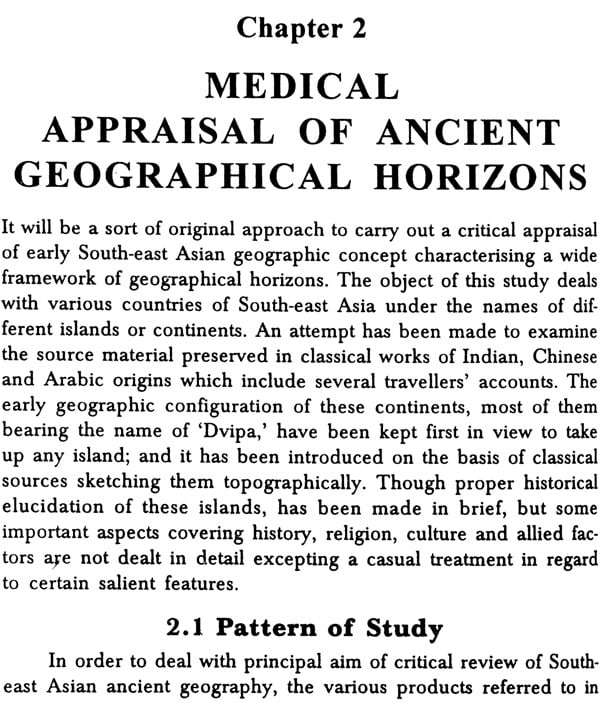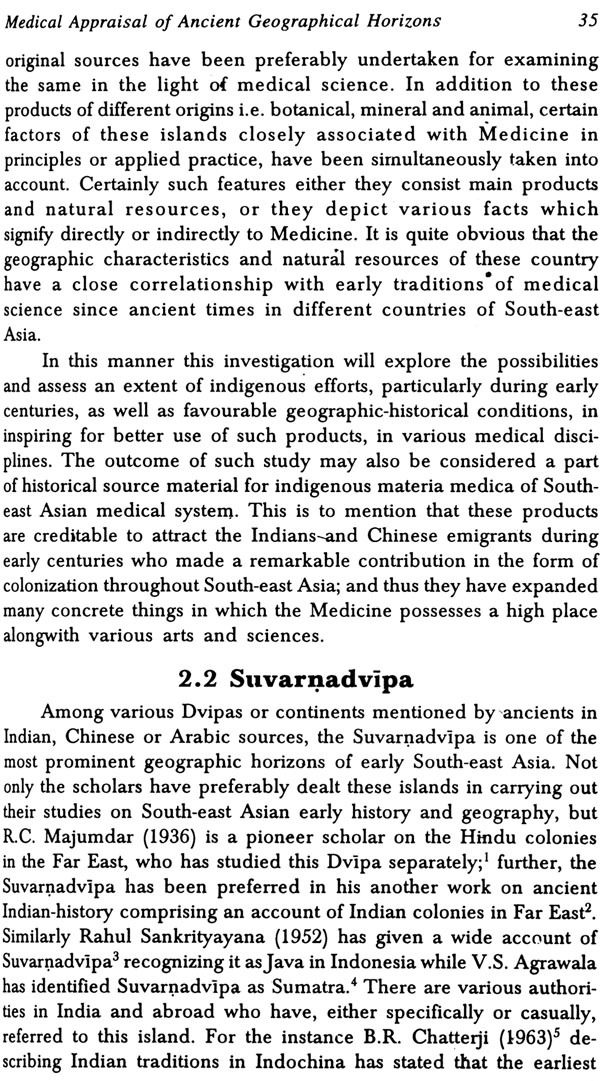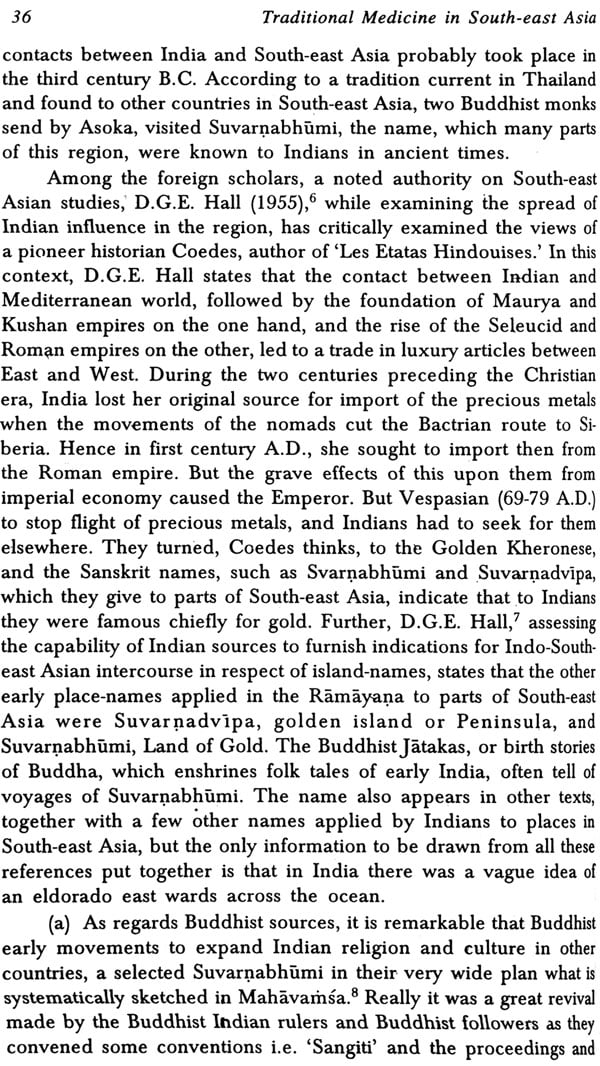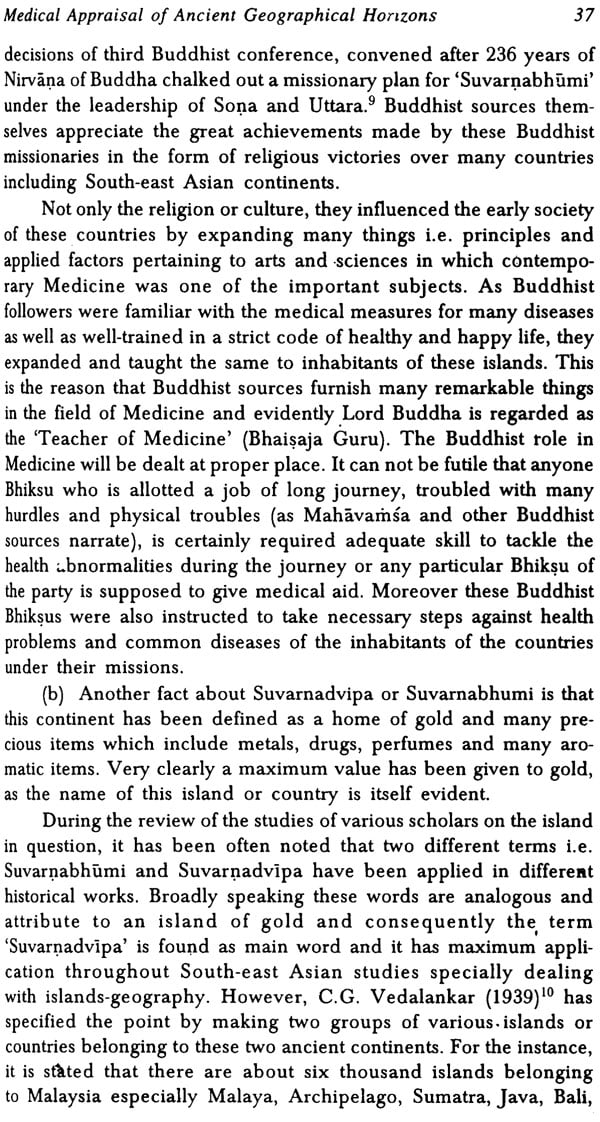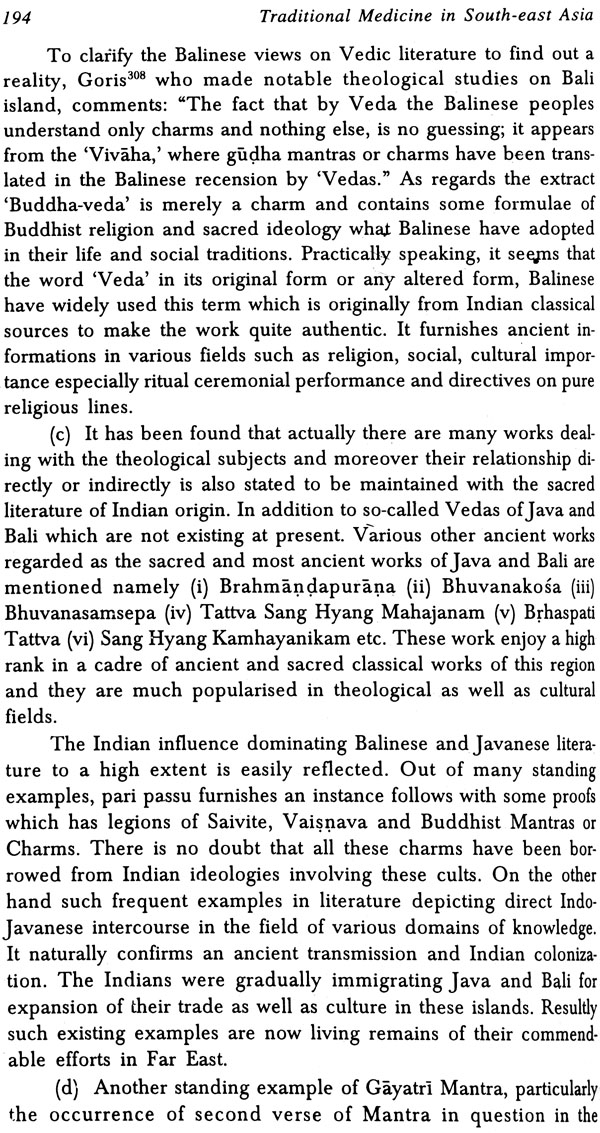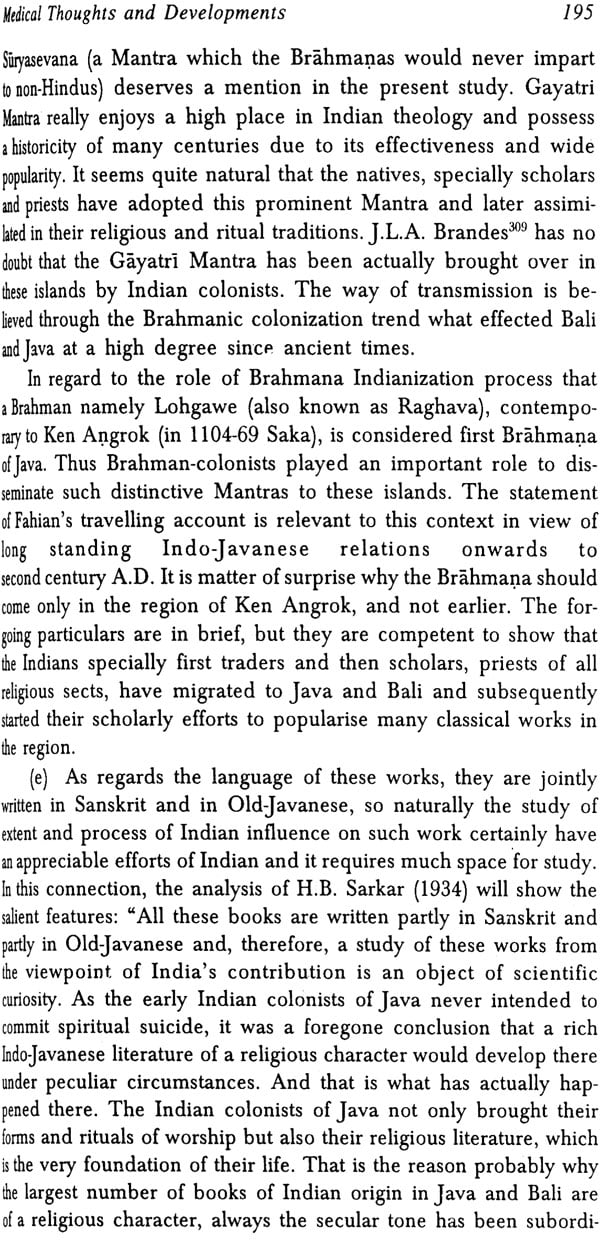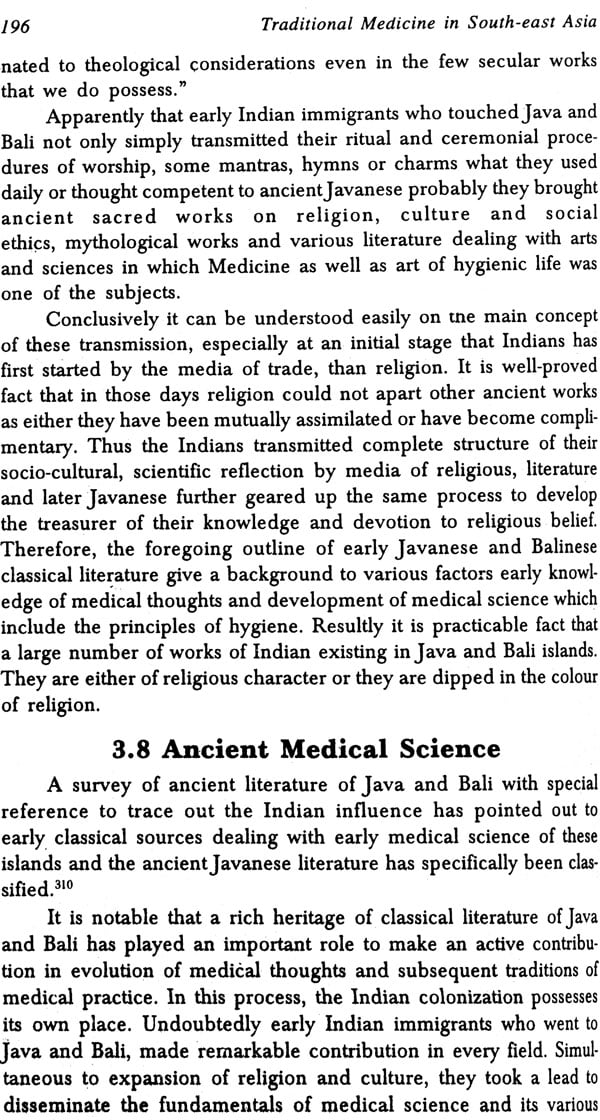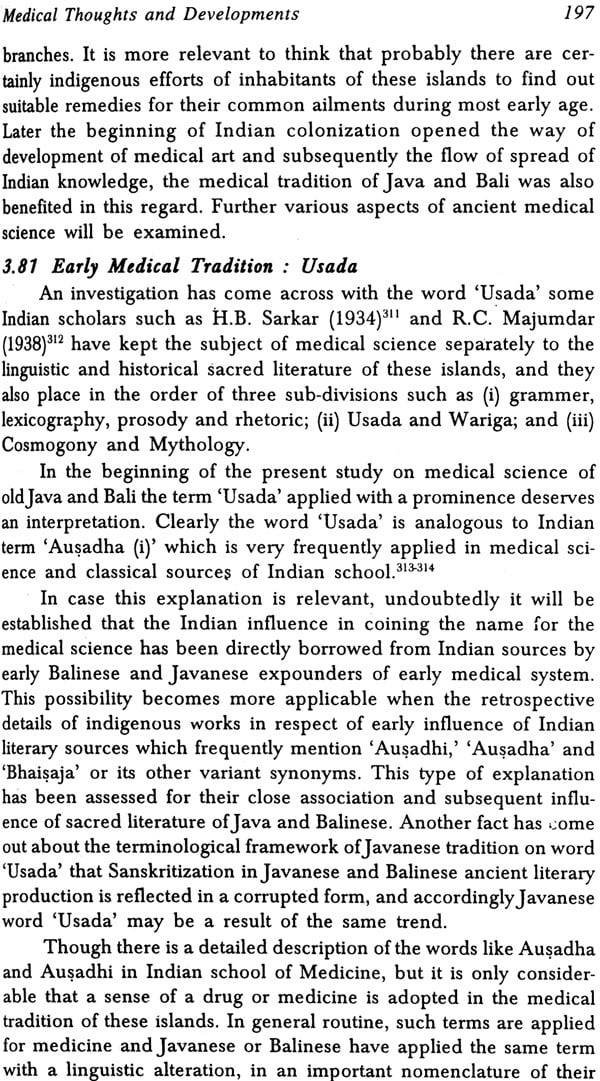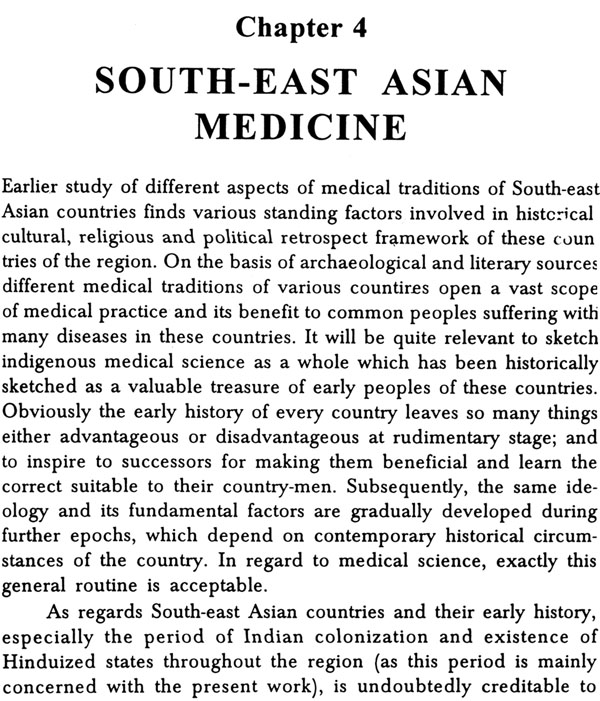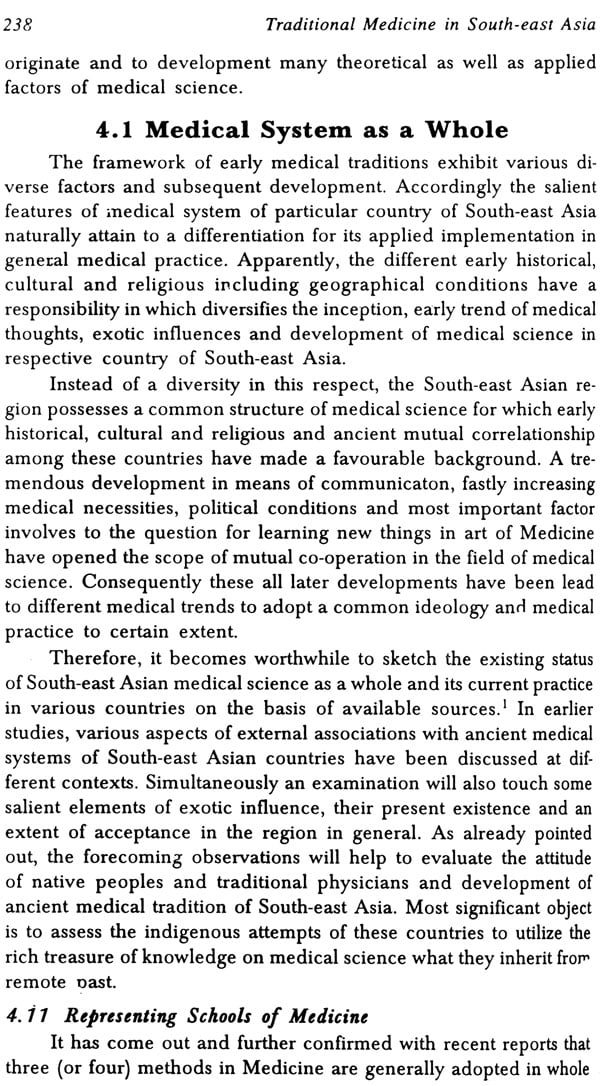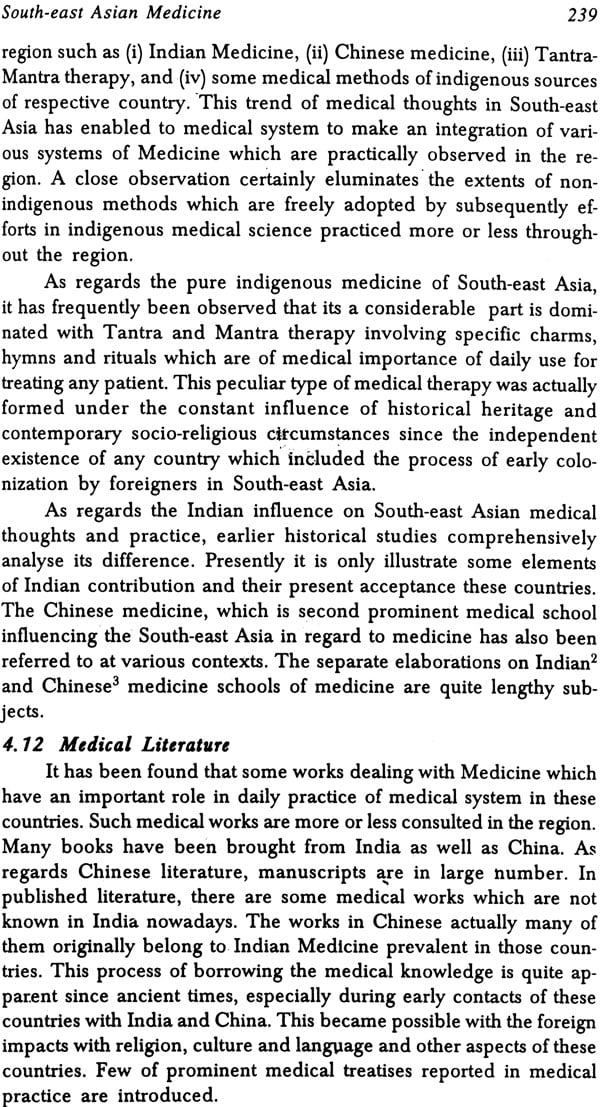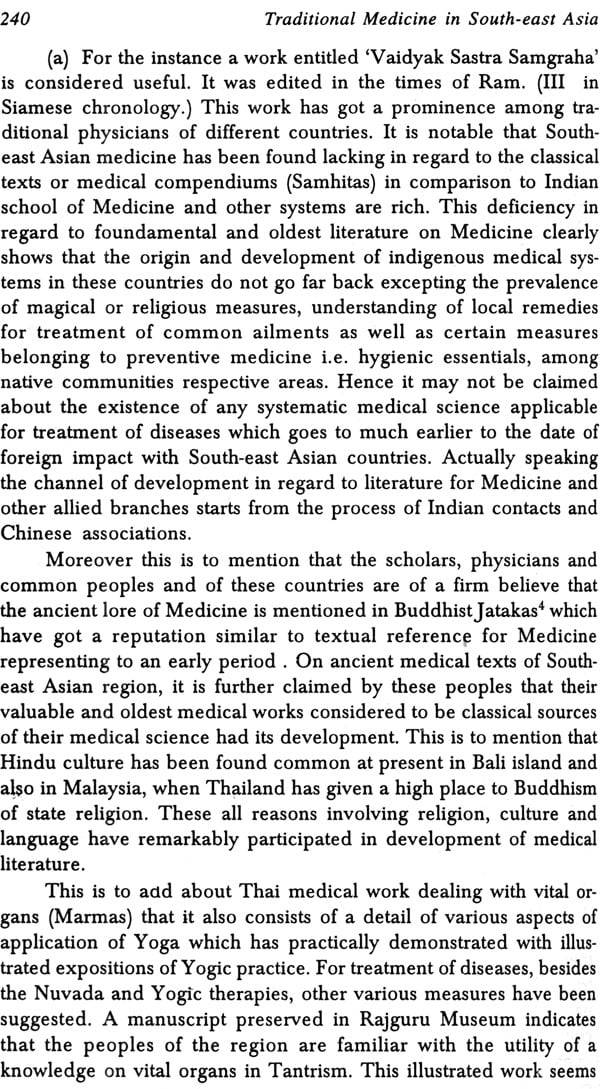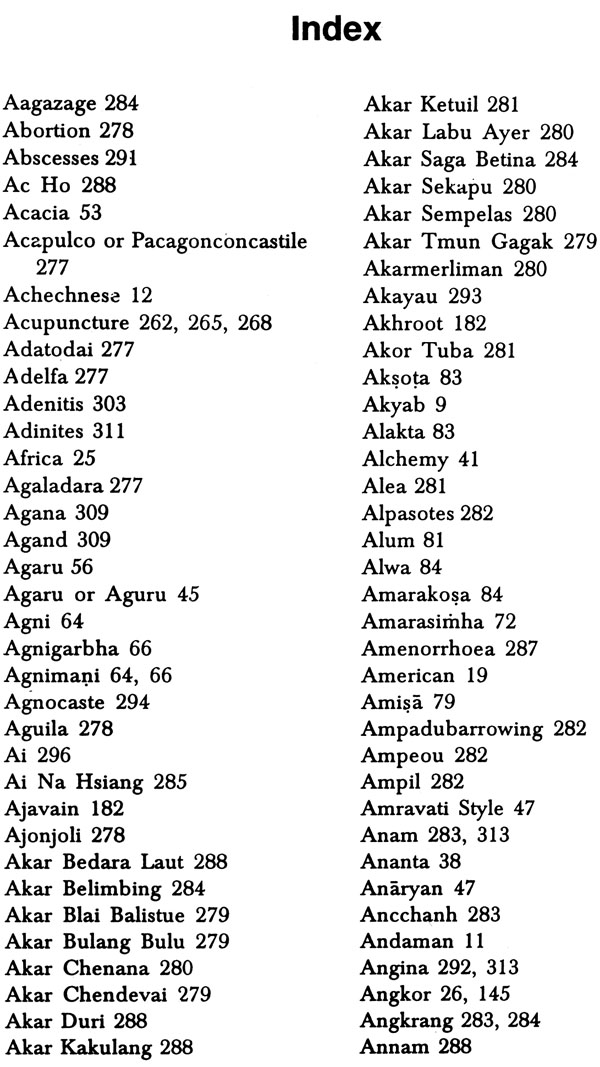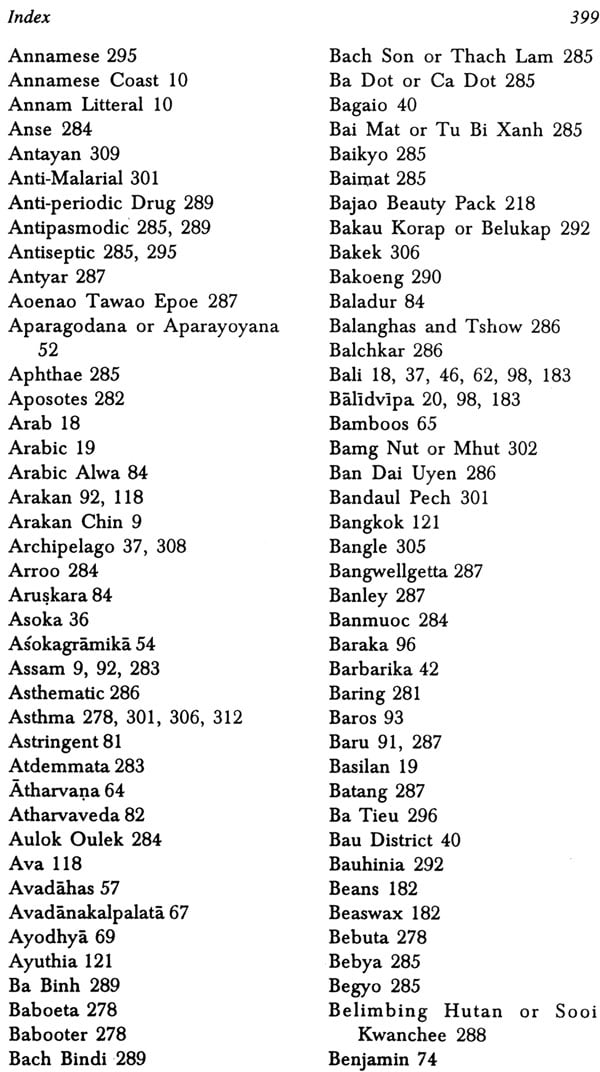
Traditional Medicine in South-East Asia and Indian Medical Science
Book Specification
| Item Code: | NAH269 |
| Author: | Dr. Gyanendra Pandey |
| Publisher: | Sri Satguru Publications |
| Language: | English |
| Edition: | 1997 |
| ISBN: | 8170305691 |
| Pages: | 430 |
| Cover: | Hardcover |
| Other Details | 8.5 inch X 5.5 inch |
| Weight | 580 gm |
Book Description
About the Book
The region of Southeast Asia attaches great significance from various points of view. Historical aspects with special -reference to medicine in the early traditions have an importance for understanding evolution and development of medicine in indigenous sources and patterns. Indological approach along with studies in Ayurveda, the ancient medical science of India, is closely interrelated on the firm foundation of age-old relations between India and Southeast Asia which are evidenced by historical facts. The studies have been carried out on South east Asian history with specific objective for investigating on different facets of medicine to focus on theory, concepts, practice and tradition laying and consolidating medical systems, by special approach of Ayurveda as well as the sources of Indology playing their greater role in better understanding of indigenous medical thoughts and therapies, and appraisal of wide perspectives of Indian knowledge which is credited for pioneer place of eternity. The present book contains six chapters, which are - Introduction, Medical Appraisal of Ancient Geographical Horizons; Medical Thoughts and Developments; Southeast Asian Medicine; Indigenous Materia Medica; and Results and conclusions. The book contains detailed Bibliography, Appendices and an Index of the words.
Foreword
The history of medicine is a fascinating study and possesses a very vivid field for carrying out the multidimensional vistas on various aspects of the different races, regions and civilizations of the world assigned to the stipulated period. The medical science embodies a vast base of thoughts and concepts preserved in ancient heritage and profusedly enriched by the cultural, religious and social traditions which have the rudimentary basis of knowledge of the arts and sciences of early times from evolutionary phase to developmental process. The antiquity of medicine can be exploited through the authentic and documented sources including literary and archaeological evidences and alike. This ideology has been landmark in support of coordinated approach for the establishment of medical thoughts on historical pattern in order to form an ideal methodology for further research.
The region of South-east Asia sticks to a great Significance from various points of view. Historical aspects with special reference to medicine in the early tradition has an importance for understanding the evolution and development of indigenous system of medicine. A thorough Indological approach is annexed with Ayurveda. The ancient medical science of India is explicitly interrelated on the firm foundation of age-old relations between India and the countries of South-east Asia. This idea is fully corroborated by the sound historical facts with self-explanatory evidences.
Therefore, the authentic studies have been conducted on South-east Asian history with special reference to objective for investigating and exploring the different facets of medicine to focus the theory, concepts, practice and tradition prevailing in that region. The nomenclature of several medicinal plants suffices to link up the base influenced much more by the ancestors of India in order to provide the wellbeing to the people of that region. Medicine is always seculiar possessing the philanthropic ideology. The intercourse between culture and civilization of the two countries is shrouded with the mystery of medicine.
The present task, undertaken (also visit in South-east Asian region) by Dr. Gyanendra Pandey, is a pioneer and epochmaking effort juxtaposed with deep and comparative studies of both the lands on scientific line. Being a budding and reputed botanist of Ayurvedic world. Dr. Pandey has been successful in his mission. Hence his present study, some earlier, paves the path for further research, and I congratulate Dr. Pandey for bringing out such a nice work prepared by him with great pains, preservance and scholarship.
I am sanguine that Dr. Pandey will continue his scholarly studies in this field in which he has devoted his career covering more then three decades.
Preamble
A. Task-The history of medicine is very wide field for carrying out multidimensional studies on various aspects of different countries, regions and civilizations of world. The medical science has basis of thoughts and concepts preserved in ancient heritage and enriched by cultural, religious and social traditions which have basis of knowledge of the arts and sciences of early times from evolutionary phase to developmental process. The antiquity of medicine is best explored with the help of literary and archaeological sources of authentic and reliable information. This ideology has been supporting for adopting coordinated approach of the historical and medical patterns as an ideal methodology.
The region of South-east Asia attaches great Significance from various points of view. Historical aspect with special reference to medicine in the early traditions have an importance for understanding evolution and development of medicine in indigenous sources and patterns. Indological approach along with studies in Ayurveda, the ancient medical science of India, is closely interrelated on the firm foundation of age-old relations between India and South-east Asia which are evidenced by historical facts.
Therefore, the studies have been conducted on South-east Asian history with specific objective for investigating on different facets of medicine to focus on theory, concepts, practice and tradition laying and consolidating medical systems, by special approach of Ayurveda as well as the sources of Indology playing their great role in better understanding of indigenous medical thoughts and therapies, and appraisal of wide perspectives of Indian knowledge which is credited for pioneer place of eternity.
B. Approach-The present study deals with the medical science of South-east Asia. It has comprehensively been carried out to achieve certain aims and objects, mainly to trace out early evolution and development of medical thoughts of the people of South-east Asian region. The countries undertaken for study are Burma, Thailand, Malaya, Indochina i.e. Cambodia, Indonesia and Philippines. The methodology applied in present investigation has examined all the prominent sources i.e. literary and archaeological, dealing with ancient history as well as indigenous medical science. A methodology based on close collaboration of history and medicine and its implementation to work out any research problem certainly possesses an originality. It also requires a careful attempt and comprehensive outlook for maintaining an active link between ancient history and medical science. The same experimental approach has been made a base of study of ancient medical systems of South-east Asian region previously known as ‘Greater India.’
1.1 During the investigation, the collection of source-material has been made from several works dealing with history and simultaneously the works on geography, religion, culture, medical science and flora (including fauna) have been examined. Thus study has covered various subjects possessing a deep correlationship with various fields which have been found useful to interpret various facts preserved in ancient history. Though the historical subject matter has furnished little on Medicine and much information is of fragmentary nature, but the study of ancient history and its various allied aspects has notably framed a skeleton of early medical thoughts and subsequent development of medical traditions in South-east Asia.
1.11 Relevant references to the contexts have been cited along with necessary footnotes. Indices, selected bibliography, and the references of works are given. Detailed contents of the chapters and their embodiment are key of transliteration and abbreviation are also given. The work has been divided into six chapters and the conclusion is appended with every chapter. The epitome of the chapters will outline the work and findings. The material of the whole work is presented into six chapters (1) Introduction, (2) Medical Appraisal of Ancient Geographical Horizons, (3) Medical Thoughts and Development, (4) South-east Asian Medicine, (5) Indigenous Materia Medica, and (6) Results and Conclusion.
Contents
| Foreword | (v) | |
| Preamble | (ix) | |
| Abbreviations | xv) | |
| Ch. 1 | Introduction | 1-33 |
| Ch. 2 | Medical Appraisal of Ancient Geographical Horizons | 34-116 |
| Ch. 3 | Medical Thoughts and Developments | 117-236 |
| Ch. 4 | South-east Asian Medicine | 237-272 |
| Ch. 5 | Indigenous Materia Medica | 273-357 |
| Ch. 6 | Results and Conclusions | 358-362 |
| Bibliography | 363-366 | |
| Appendices | 367-397 | |
| Index | 398-415 |
